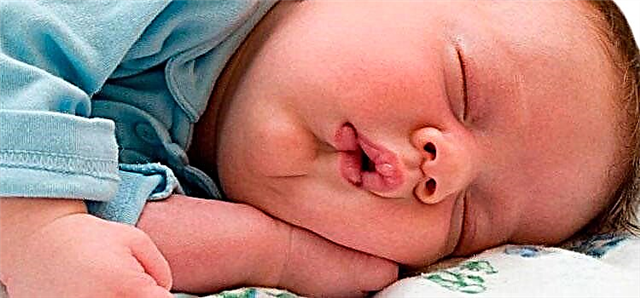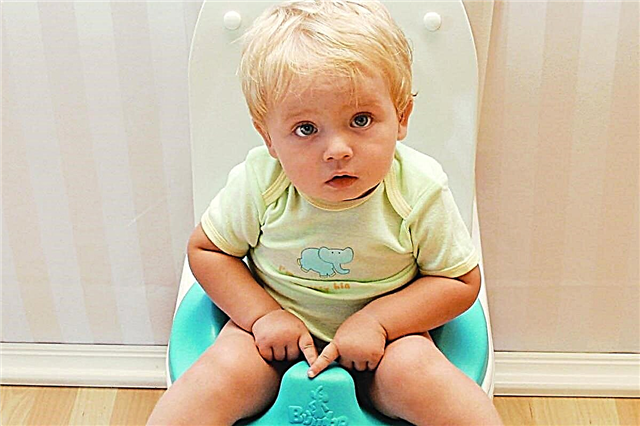During the first trimester of pregnancy, the internal organs of the fetus are formed, therefore, during this period and throughout the entire period of bearing a child, a woman should most strongly protect her own body from pathogenic factors that are a potential cause of severe anomalies, which include gastroschisis.
Fetal gastroschisis is a congenital defect that forms in a child during intrauterine development. This anomaly is represented by the presence of an opening in the abdominal wall through which the intestines break through. The intestines then develop outside the baby's body in the amniotic fluid.
The incidence of the anomaly is 1 in 2,000 children and increases over time. This is one of the relatively common congenital abnormalities that neonatologists and pediatric surgeons face in the modern world.
Gastroschisis is a severe congenital pathology. Pathogenesis of the disease
The formation of this defect occurs during the first 8 weeks of gestation. During this period, two longitudinal folds begin to grow, of which muscles subsequently develop in the "back - stomach" direction. Incomplete closure of the folds leads to the formation of a defect in this place.
Due to incomplete fusion, eventration of the abdominal organs occurs through the abdominal wall, and the intestines usually protrude through the rectus abdominis muscle to the right of the navel.

Reasons for the formation of gastroschisis
The exact etiology of gastroschisis is unknown. Genetic or chromosomal changes in the fetus can cause this disorder.
There is a theory that the anomaly occurs due to fetal blood supply disorders during the first eight weeks of pregnancy, as a result of which the abdominal wall cannot develop correctly. This causes a small opening near the umbilical cord to form, and the intestines and other abdominal organs are pushed outward.
Another theory implies insufficiency of mesoderm (cell layer) in the formation of the body walls. However, this hypothesis does not explain the occurrence of the mesoderm defect in this particular location.
Also, experts believe that gastroschisis can be caused by amnion rupture (embryonic membrane) around the umbilical ring, but then it remains unclear that gastroschisis occurs much less frequently compared with an umbilical hernia.
Risk factors

The likelihood of developing gastroschisis largely depends on the woman's behavior during pregnancy. Therefore, expectant mothers need to be very careful during this period if they want to give birth to a healthy child.
Risk factors include:
- small age of the expectant mother. Her young organism is not yet able to provide the fetus with all the necessary elements for its growth and development;
- smoking and drinking alcohol during pregnancy;
- uncontrolled use of medications during pregnancy;
- intrauterine infections.
Symptoms and Signs
During pregnancy, there are no signs (except for ultrasound). About 60% of babies with gastroschisis are premature. At birth, the baby will have a relatively small (<4 cm) opening in the abdominal wall, usually to the right of the navel. Some part of the intestine is usually outside the body, passing through this opening.
Types of gastroschisis
A simple and complicated gastroschisis is distinguished.
In simple pathology, only the intestines emerge from the opening in the abdominal cavity.
With complicated gastroschisis, one or more of the following conditions occur:
- intestines outside the baby's body Grossly damaged, such as a piece of tissue that has died (necrosis), or the intestines become twisted or tangled
- intestinal atresia, when part of the newborn's intestine is not fully formed, or the intestinal tube does not have a lumen in some area;
- other organs, such as the stomach or liver, protrude from the opening.
Cases of simple gastroschisis are more common than complicated ones.

Diagnostics
Gastroschisis is usually found on a routine 18-20 week ultrasound scan when bowel loops are visible outside the abdominal cavity. However, pathology can be detected earlier in gestation.
The mother can be tested for alpha-fetoprotein levels. It is a substance produced by the fetus that is found in the amniotic fluid and the mother's bloodstream. An increase in alpha-fetoprotein is associated with the presence of a defect in the abdominal wall.
Approaches to the treatment of gastroschisis
Monitoring the intrauterine development of the child
Infants with gastroschisis should be closely monitored throughout pregnancy for intrauterine growth retardation and bowel damage. The intestine can be damaged by exposure to amniotic fluid or by impaired blood flow to the affected part of the organ.
There are no methods of intrauterine intervention for babies with gastroschisis. The condition cannot be corrected during pregnancy. This pathology must be treated immediately after the birth of the child.
Place, term and method of delivery
Childbirth must be scheduled in a hospital with a neonatal intensive care unit. A caesarean section is recommended after 36 weeks of gestation if the baby's lungs are mature enough (as determined by ultrasound). Early delivery helps prevent further bowel irritation.
Any baby with gastroschisis should be operated on as soon as the baby is stable, usually within 12 to 24 hours after birth. The infant cannot survive with the intestines outside the body.
Medical care
After birth, the baby should be placed under a radiant warmer. The released bowel is placed on the baby's upper abdomen and wrapped in a plastic (polyethylene) heat-insulating bandage to avoid touching the mesentery.
A urinary catheter should be inserted to monitor urine output and assess fluid resuscitation. A rectal examination is necessary to dilate the anal canal. To reduce the protrusion of internal organs, meconium is evacuated from the sigmoid colon.
To prevent infection of the abdominal organs, broad-spectrum antibiotics are administered.
Intravenous administration of nutrients is carried out during the period of gastrointestinal dysfunction.

Surgical intervention
The intestines are put back into the baby's belly and the abdomen is closed if:
- outside there is a relatively small volume of the intestine;
- the intestines are not greatly enlarged and not damaged.
If possible, the operation is performed on the child's birthday.
Intervention is carried out in several stages in the following more severe cases:
- there is a large volume of intestines outside the body;
- the intestines are severely swollen;
- the baby's belly does not have enough room to hold the entire intestine.
In such a situation, several surgeries are performed to slowly place the intestines / organs back into the abdomen.
In a stepwise procedure, the intestines are wrapped in a bandage that is attached to the abdomen. Each day, the bandage is tightened, and part of the intestine is gently pressed inward. When the entire intestine is inside, the dressing is removed and the abdomen is closed.
In about 10% of babies born with gastroschisis, part of the intestine is not well developed. In these cases, some children may need:
- bowel resection - surgery is necessary when part of the intestine is severely damaged;
- colostomy - one end of the large intestine is excreted through an opening (stoma) made in the abdominal wall. Stool traveling through the intestines drains through the stoma into a pouch attached to the abdomen;
- the need for a bowel transplant rarely occurs.
Post-operative care
A gut that has developed outside the child's body needs healing and normal functioning. For the first few weeks of life, the infant should receive all the nutrients it needs intravenously. Antibiotic therapy may also be needed to prevent infection.
When the baby's intestines begin to function, usually after two to three weeks, it will be possible to give him breast milk or a special formula.
After a child is discharged from the hospital, there is a small risk of bowel obstruction due to scar tissue or a fracture in the bowel loop. Bowel obstruction symptoms include:
- bilious (green) vomiting;
- bloated stomach;
- refusal of food.
If you experience any of these symptoms, contact your pediatrician immediately.

What's the forecast
The prognosis depends on the severity of pathological problems such as prematurity and inflammatory bowel dysfunction, bowel atresia, and short bowel syndrome. Children with complicated gastroschisis require a longer hospital stay and have more comorbidities than children with simple pathology.
In general, most children who have had gastroschisis can continue to live normal healthy lives without complications associated with the abnormality.
How can you avoid the formation of gastroschisis in the fetus?
Since the etiology of gastroschisis is completely unclear, it is difficult to develop preventive strategies.
However, it is possible to reduce the influence of risk factors; for this, the expectant mother needs:
- planning a pregnancy correctly;
- eat rationally during the period of bearing a child;
- completely stop smoking, alcohol and drugs;
- visit antenatal clinics and undergo preventive examinations in a timely manner.
Conclusion
If a baby is born with gastroschisis, it needs proper professional supervision. It is also recommended to always choose the best medical facility for childbirth.
Although babies born with gastroschisis recover very quickly from a series of surgeries, it is extremely important to avoid risk factors. Pregnant women need to monitor their behavior and condition during this important period to minimize the likelihood of this anomaly.



